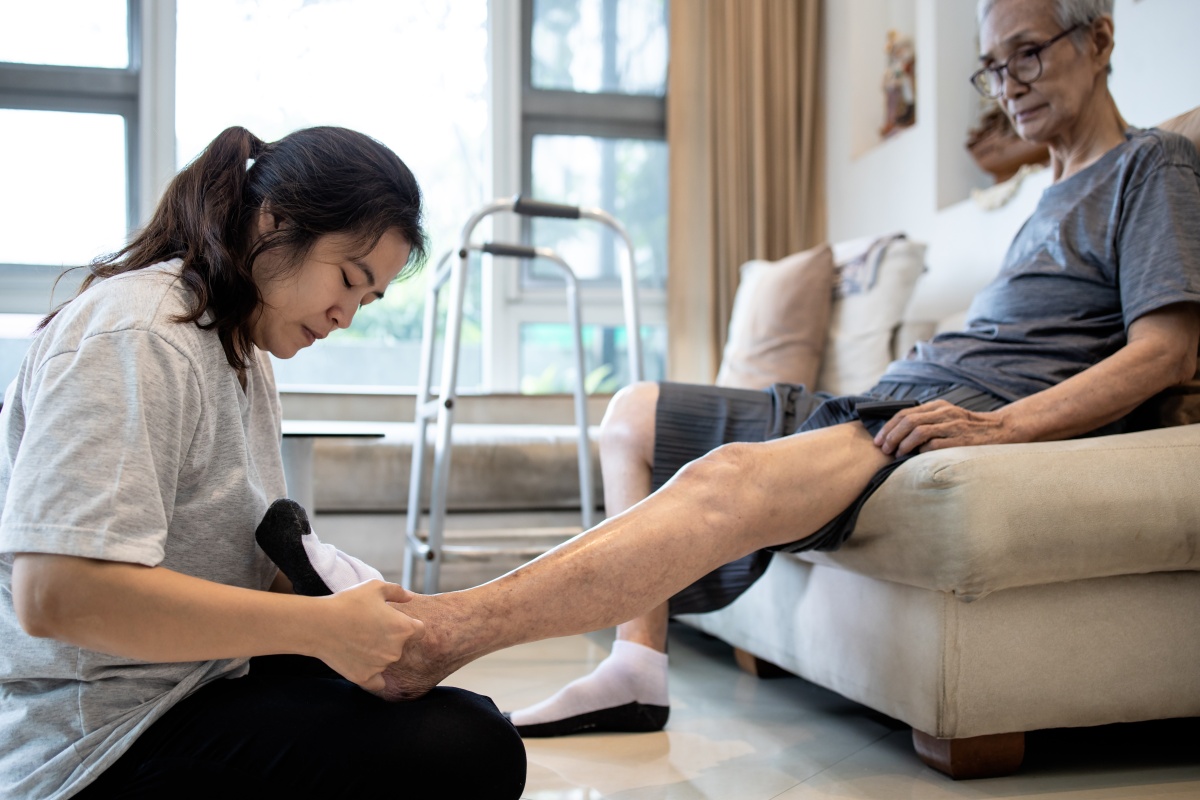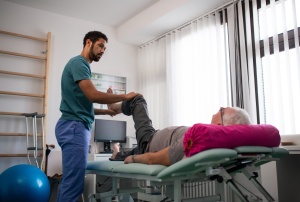Routine foot care goes far in reducing pain, preventing infection, and maximizing mobility. In fact, quick and simple practices conducted regularly can make a dramatic difference in health outcomes for older patients in skilled nursing facilities – especially for those with diabetes, peripheral artery disease (PAD), and other conditions that cause poor circulation.
Between appointments with a podiatrist, staff can perform quick checkups to maintain residents’ foot health. Consistent attention enables skilled nursing facilities to spot early signs of potential complications and detect any new systemic conditions before they escalate.
Considerations for maintaining foot health
Any or all of the following measures can be conveniently incorporated into tailored patient plans. Staff also can encourage residents to address their own foot hygiene, when they’re capable, in order to foster diligence, awareness, and independence.
- Look at residents’ feet daily.
Including a short visual inspection of patients’ feet in the daily care schedule can be revealing. Observe the bottom, sides, and tops of feet, and between the toes. Note small cuts, splinters, cracks, calluses, blisters, and pressure sores.- To deter infection, have a podiatrist look at bunions, hammer toes, discolored toenails, corns, calluses, and ulcers regardless of the individual’s health status. Pain, tingling, numbness, stiffness, and inflammation in the feet and ankles also warrant a specialist’s opinion. Bedsores often appear on the heels, so propping up ankles with feet suspended can be helpful.
- Swift medical referral is critical for diabetic ulcers, which can quickly escalate into significant infections. These wounds typically develop on the ball of the foot or bottom of the big toe. Notably, 85% of all lower extremity amputations in people with diabetes are preceded by a foot ulcer.[1]
- Tend to toenails.
Overgrown toenails can create pain and/or imbalance while walking. For someone with circulation issues, an ingrown toenail can easily spiral into a limb-and-life threatening complication. Between visits with a podiatrist, cut patients’ toenails straight across the top, and round the edges with a file. - Clean feet regularly.
Good foot hygiene is important for preventing bacterial, fungal, and viral infections, and helps control odor. Wash residents’ feet with warm water, soap, and a washcloth. Antibacterial foot sprays are also recommended. - Apply lotion.
Nerves control sweat and oil glands, so people with nerve damage are more likely to develop cracked heels. Apply moisturizer to the tops and bottoms of patients’ feet after they’ve been thoroughly washed and dried. Don’t use lotion between the toes, as this can lead to infection. - Change socks.
Socks keep residents’ feet dry, comfortable, and protected. Change socks daily. Ensure that they’re seamless and don’t inhibit blood flow. Acrylic blends wick moisture away from the skin, but 100% cotton socks retain moisture, which creates conditions for infection. - Check shoes.
Ill-fitting shoes can impair mobility and cause pain or injury. It is important for caregivers to check that shoes and slippers fit comfortably, are in good condition, and are worn whenever residents are out of bed. - Facilitate movement.
Exercise stimulates blood flow in the legs and feet. Stretching eases muscle tension and knot formations. Podiatrists can identify appropriate exercises, and caregivers can work with residents to stretch their feet habitually. Chairside alarms are good reminders for patients to wiggle their toes and move their ankles throughout the day. Elevating the person’s feet when seated is another beneficial tactic.
Teaming with onsite podiatry services
The range of needs and issues regarding foot health underscores the value of partnering with an outside professional services provider. Beyond delivering efficient and convenient care, a podiatry team can educate facility staff and be available for their questions. These partnerships also protect staff time, as residents with unchecked foot disorders are more likely to require additional assistance. Implementing routine foot care in tandem with the attention of an experienced onsite podiatry provider is a powerful combination for skilled nursing facilities.
 Home Page
Home Page Home Page
Home Page

 Share to Twitter
Share to Twitter
 Share to Linked In
Share to Linked In





